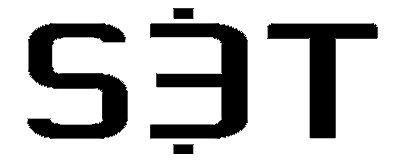S3T Friday, July 21 - 12 month playbook for GenAI, Wage-inflation gap, evolution of data science, targeting the right kind of change...

🔊 Listen to this newsletter on the S3T Podcast
In this edition:
- Change Leadership Skills: How to target the right kind of change: being selective about the kinds of change YOU decide to drive.
- Macroeconomics: Wages aren't keeping up with inflation. You want to understand this because it impacts your most vulnerable customers and community members.
- Emerging Tech: GenAI and Large Language Models are going to change the way we do data protection, governance and compliance.
- For Paying Members: a 12-month playbook for GenAi tailored to CDOs, CISOs, CIOs, and CMOs. Succinct lists of top priorities to include in your 2024 planning and budget.
Change Leadership: Targeting the right kind of change
Last week we talked about why it's important for everyone to learn change leadership skills. This week we want to build on that by talking about how to target the right kind of change: being selective about the kinds of change you decide to drive. This will help you recognize the kinds of projects you want to be part of and help you evaluate and measure your success.
The status quo represents a state where no change occurs at all. It is a stagnant condition that often resists progress and improvement. Maintaining the status quo may seem comfortable and familiar, but it hinders growth and innovation. As change leaders, its our job to notice the limitations of the status quo and find constructive ways to challenge it.
Great. So we are committed to driving change. But let's get a little more specific:
In change leadership, it is essential to understand and differentiate between three different types of change: careless change, needed change, and needed change that endures.
Careless Change
Careless Change refers to change pursued for the sake of novelty or misguided reasons. It lacks thoughtful planning and full consideration of its potential impact. A common example of this in the … industry is … Careless change can create more problems than it solves, leading to confusion, resistance, and unintended negative consequences. As change leaders, we must exercise caution and ensure that change is driven by genuine need and purpose.
Examples of careless innovation
In 2006, I published America 2076: Pop Technology, and the New Future of Democracy. In this book, I envisioned a glowing future where social media platforms would enable an electronic form of democracy, and we all worked on legislation together aided by a more direct more efficient form of representation than Congress could ever provide.
My thesis was flawed: I missed the fact that these platforms were unleashing algorithms designed primarily to drive engagement for advertisers, and were likely to contribute to political extremism. Today we classify these platforms as examples of careless innovation because the designers gave apparently no thought to how their creations might one day be used to mislead, divide and waste people’s time.
Another example: Three years ago, a well-known healthcare AI platform used an approach in its model training that encapsulated biases in medical spending, and caused the model to repeat the same form of bias, selecting some groups to receive less care than others simply because of race. Fortunately, an AI research group uncovered this bias and shared methods for preventing it in future iterations.
Careless innovations can bring unintended side effects and harm, sometimes at large scale. The potential for this needs to weigh heavily on the minds of change leaders and impact how we approach our work.
Intentional, needed change
Needed change is change that is carefully planned and implemented to benefit others. It involves identifying areas for improvement and strategically addressing them. This type of change is driven by a genuine desire to make a positive impact and requires thoughtful analysis, stakeholder engagement, and effective execution. As change leaders, our focus should be on driving needed change that brings tangible benefits and improves the lives of those affected.
Needed change that endures
Enduring change continues to provide lasting benefits, even as circumstances evolve and new challenges emerge. As change leaders, our highest aspiration is to learn how to create change that withstands the test of time and positively shapes the future. The ultimate goal for change leaders should be to create enduring changes.
Example of needed change that endures: I’ve been honored to be part of AI initiatives that used emerging tech to enable significant - even life-saving benefits to others. It’s gratifying beyond words to see the results - and hear continuing stories and examples of the impacts, especially after so much exhaustive work went into the careful design and creation of the platform.
How to get there
So now we've clarified the kinds of change and the ultimate goal: needed change that endures. How do we learn how to do this?
To become the kind of change leader who delivers needed change that endures, start with the understanding that effective change leadership requires that you embrace a learning mindset and deliberately cultivate a set of skills.
- Learn how to parse whats happening in emerging tech and economics and translate that into impacts to your company, customers and stakeholders.
- Learn how to navigate the complexities of change.
- Learn widely, and learn to connect dots. Be open to new ideas, perspectives, and insights.
- Learn how to foster collaboration, build strong relationships, and empower others to contribute to the change process.
Remember, change leadership is not about novelty or temporary fixes. It is about making a genuine difference, improving lives, and shaping a better future. By applying what you've learned here, you can help yourself and your teams be ready to embrace the opportunity to deliver needed change that endures.

Macroeconomy
Inflation Wage Gap
Of all the mid-2023 economic outlooks compared in last week's newsletter, the outlook from KKR, the alternative asset investment firm, stands out because they seem to grasp more than the others the fractured nature of the economy, saying that "we are experiencing both a rolling recovery and rolling recession at the same time."
The Fed has focused on inflated wages (See Further Reading: Fed War on Wages below) in its reasoning for rate hikes, but the Organization for Economic Co-operation and Development (OECD) noted last year that 1 in 6 workers are employed in "concentrated labor markets" - rural areas with fewer job options - where wages are not keeping pace with inflation.
Subsequent data reveals that this labor market concentration issue impacts workers beyond just rural areas. Earlier this year the OECD summarized the wage/inflation gap, finding that only Belgium is experiencing positive growth in real wages (see chart below). This means that wages are falling behind inflation in most of the developed world.
Quick explainer on real vs nominal wages:
- Nominal wages refer to the dollar amount in your paycheck - by comparing over time, we can see how that amount may have increased or decreased.
- Real wages refers to buying power of your paycheck, given current prices. By comparing over time we can see whether we are gaining or losing buying power.
If your wages go up 3% but inflation increases by 5%, your pay isn't keeping up with inflation. You're losing buying power and goods and services are becoming less affordable for you. See Investopedia for a longer explanation.
Wages are not culprit
If wages are falling behind, are wages really the culprit - or the only culprit - in rising inflation?
Robert Reich and others have argued that corporate financial practices that focus on maximizing profits can also contribute to inflation. This short Sept 2022 opinion from Reich summarizes this argument that inflation is driven not by worker wages but by corporate profits, specifically an increasingly clever set of financial practices used to maximize corporate profits.
Rethinking Welchism
For a key example of these “clever financial practices” and to better understand their origins, check out The Man Who Broke Capitalism: How Jack Welch Gutted the Heartland and Crushed the Soul of Corporate America--And How to Undo His Legacy by David Gelles. The book chronicles Jack Welch's transformation of GE from an "admired industrial manufacturer into what was effectively an unregulated bank,” and how the toolkit of approaches he used - stock buybacks for example - this approach became standard practice for other publically- traded Fortune 500 companies and contributed to the so-called hollowing out of the middle class.
Further Reading on the inflation wage gap and its uneven impacts
Labor market concentration
- Some Facts about Concentrated Labor Markets in the United States (PDF) - Elizabeth Weber Handwerker and Matthew Dey, U.S. Bureau of Labor Statistics June 2022.
- Labor Market Concentration - José Azar, Ioana Marinescu & Marshall I. Steinbaum, National Bureau of Economic Research. In this paper, authors calculate labor market concentration for over 8,000 geographic-occupational labor markets in the US.
- A New Study of Labor Market Concentration - By Marshall Steinbaum, Roosevelt Institute. Argues from a growing body of research that employer power—monopsony—not a lack of education, is what holds workers back–from switching jobs, migrating, or from starting a new business.
- Walmart as a notable monopsonist - Justin Wiltshire, Washington Center for an Equitable Economy, March 29, 2022
- Apple sued by French developers for monopsony - Aarathi Ganesan, Medianama, August 3, 2022
The Fed’s perspectives on wages
- Jerome Powell Jackson Hole Wy Comments 2022 AP News Aug 26 2022.
- Powell Jackson Hole Speech excerpt as quoted in WP: ““While higher interest rates, slower growth and softer labor market conditions will bring down inflation, they will also bring some pain to households and businesses. These are the unfortunate costs of reducing inflation.”
- Wages are still growing rapidly. The Fed wants them to slow down. By Madeleine Ngo Vox Jan 19, 2023
- Wage growth is slowing. Blame the Federal Reserve. Irina Ivanova, Moneywatch CBS News March 2023.

Emerging Tech
What Generative AI is doing to Data Science (and Data Security)
This new paper - What Should Data Science Education Do with Large Language Models? by researchers from Standford, UPenn, UofW and Rutgers shares a key insight about the future of data science. The paper focuses on data science education but is also a must-read for data governance and HR teams.
As Large Language Models (LLMs) like ChatGPT become more prominent in data processing, major shifts are required in not just education and talent strategies but also data protection measures.
GenAI impacts for data science career education
The authors argue with concrete case studies that the data science role will evolve as GenAI-based tools streamline the data wrangling responsibilities that dominate so much of data scientists' attention today. They argue further that educational strategies must adapt. Curricula need to be updated to emphasize AI management and ethics, along with traditional data science and coding. Students should be equipped with skills to navigate the emerging landscape where humans and AI work in tandem, and to understand the capabilities and limitations of LLMs.
Impacts for talent strategies
With LLMs streamlining intricate tasks like data cleaning, model building, and report writing, data scientists' roles are being transformed. The authors allude to the need to evolve talent strategies as LLMs redefine their roles within data science. With LLMs streamlining intricate tasks like data cleaning, model building, and report writing, data scientists' roles are being transformed. The focus is shifting away from direct coding and data manipulation towards assessing and managing the outcomes of AI-generated analyses. Therefore, future talent acquisition and development should center on skills like AI oversight, data interpretation, and ethical decision-making, rather than hands-on coding and data wrangling.
Dilemmas for data governance and compliance
The authors of the paper did not address or seem to have an awareness of the implications of how this shift will impact data security and data governance. In fact, HIPAA compliance and Security are not discussed in the paper.
Nevertheless, what the authors highlight has some significant implications that data privacy and governance teams need to start thinking about:
- Data protection approaches will need a significant revamp, especially in regulated industries like healthcare and banking, where safeguarding sensitive data is paramount.
- The conventional data security model, which relies heavily on controlling people and systems, needs to expand to include AI and the processes it executes.
The emergence of GenAI and the desire to use it for regulated data creates two dilemmas for current industry stakeholders.
The data processing dilemma
Traditionally we have ensured data safety by focusing on the control of individual access and system perimeters. This is no longer sufficient. The advent of generative AI introduces a new element that requires security and governance: the data processing itself.
So far there is very limited tooling focused on the problem of the governance of AI-related data processing. Weights & Biases is one notable exception.
Tooling is needed for implementing measures to monitor and control how AI handles data, ensuring it adheres to privacy and audit requirements, and continuously checking and validating AI actions.
Expect a new set of controls focusing on AI processes to emerge - and until they do, regulated data may have limited ability to leverage GenAI. (Healthcare and finance-focused VC groups may want to consider GenAI compliance as a priority investment theme.)
The security perimeter dilemma
LLM-based data processing poses a dilemma for information security teams in regulated industries:
- Today's security model requires that regulated data be kept inside of secured perimeters. Access to this data is limited to specifically authorized people and carefully vetted software tools.
- Unfortunately for this security model, today's more powerful GenAI tools reside outside these secured perimeters.
There will be high motivation from public and private stakeholders to resolve this because some of the data kept inside these secured perimeters constitutes some of the largest most valuable data sets in the world. They could offer very large benefits to the health and well-being of individuals and communities if allowed to be processed by thoughtfully designed GenAI approaches.
In summary, as LLMs become more integral to data processing, the way we strategize talent acquisition, educate future data scientists, and protect sensitive data will have to evolve. This challenge will be especially acute for regulated industries which must balance their aspiration to unleash value from their data vs. their responsibility to protect the data and privacy of the industries and communities they serve.
Related: The SEC mulls how to get in the AI regulation game.

For Paying Members Only: Playbooks for C-Level stakeholders: GenAI moves to make in the next 12 months
What these are and how to use them
Leading executives are already thinking about how to adapt strategically to the evolving GenAI landscape. Here is a set of playbooks for the specific members of your C-suite who are most likely to be impacted by GenAI in the next 12 months.
